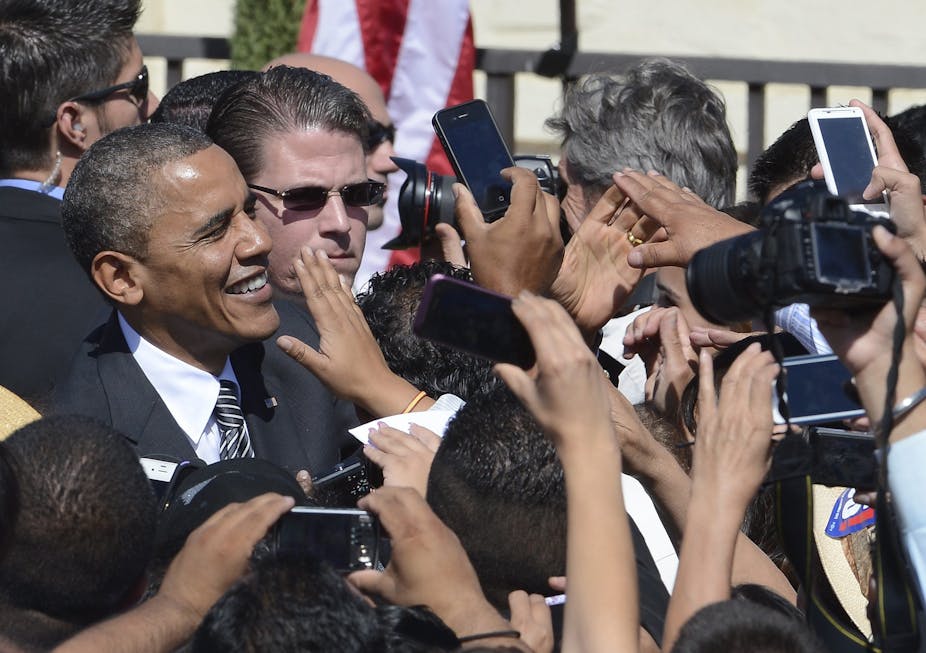Speaking to a room full of wealthy donors at a private fundraising event in May, Republican presidential candidate Mitt Romney said 47% of American voters believed they were “victims” and “entitled” to government support. These people, Romney suggested, are unshakeable Obama supporters. They’ll never vote for him because they could never be convinced to “take personal responsibility and care for their lives”.
This was a brief moment among the reams of press releases, hours of interview footage, and endless tweets and email blasts of the mediated election campaign. Yet the comments, leaked in a video released by Mother Jones last month, continue to provide a central frame for media coverage as the US general election campaign enters its final weeks.
Romney’s remarks, widely cast as condescending and insensitive, sparked exhaustive analysis by the political media. Will the statements hurt Romney’s electoral chances, commentators wonder, and why didn’t President Obama use them against him in the first debate?
Romney’s comments recall the leaking of similar footage of Barack Obama early in the 2008 campaign, when he was recorded speaking about small town voters at a Democratic fundraiser. At this event, then-candidate Obama argued that it was not surprising that these Americans, in the face of economic change and disruption, “get bitter”, and “cling to guns or religion, or antipathy toward people who aren’t like them” as a way to “explain their frustrations”.
In both 2008 and 2012, these supposed gaffes were reported as windows into the candidate’s “true” self. Here was a glimpse of the real views that lie beneath the carefully polished exterior of the micromanaged politician. This plays into a well-established campaign narrative that says if we can simply decode the spin – or even better, catch the candidate off guard – we will discover what they really think. In this conception there is an authentic political self, hidden from voters behind all the bells and whistles of the campaign.
Scouring the footage and transcripts of these moments in the search for the “real” Romney or Obama is a distraction. An election campaign is an audition, and what candidates say and do when they are vying for electoral support matters; but the quest to uncover the candidates’ authentic selves is misdirected. The distinction between campaigning and governing is increasingly blurred in the age of the permanent campaign. In office, presidents are likely to face the same political challenges, and be guided by the same political instincts, as those that influence their public campaign communications.
But more fundamentally, these moments matter because they are part of a broader campaign conversation that both reflects and helps shape how members of the nation imagine their priorities and values.
Election campaigns are about more than the particular personalities listed on the ballot. As the candidates struggle with their opponents for votes they also compete for ownership of the national story, articulate shared experiences and collective values, and call on Americans to recognise themselves in particular images of the nation. These compelling moments offer a window into the complex relationship between political candidates and their public, and between political leaders and the nation.

The media’s “gotcha” approach misses the more crucial significance of these comments: their reflection of how different groups in American society struggle to understand and relate to each other.
Obama’s “elitist” reflections on small town Americans, and Romney’s dismissive attitude towards society’s marginalised and disadvantaged illuminate this struggle.
American presidents are expected to live up to a “log cabin” ideal. As British political communication theorist Nicholas O’Shaughnessy has explained in The Phenomenon of Political Marketing, this doesn’t mean they literally need to be born in a log cabin (in the legacy of fabled early presidents Abraham Lincoln and Andrew Jackson). Instead, candidates need to “connect with majority values”, showing that they experience “common emotion with uncommon intensity”.
Romney’s remarks about the “47%”, and Obama’s “guns and religion” comments resonated with voters and caused political damage less because they proved the public persona of the candidate is not “real”, but because of the lack of empathy that both Romney and Obama displayed as they talked to those in the room (and in the know) about another group of Americans “out there”. Both sets of comments demonstrated a failure to see the concerns of these Americans as shared problems that would be solved together.
Comments of this kind, whether in a national address or off-the-cuff aside, paint an unflattering image of the candidates. Ultimately, however, what will matter in this campaign is whether voters are able to connect with a leader’s vision of the nation and its future.

